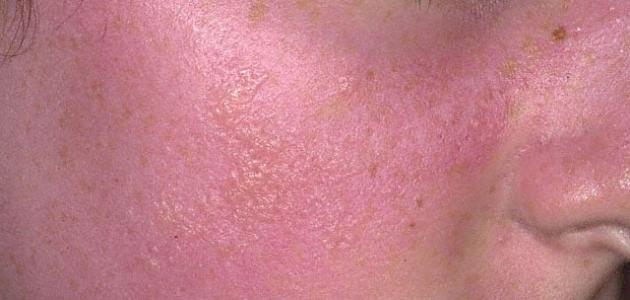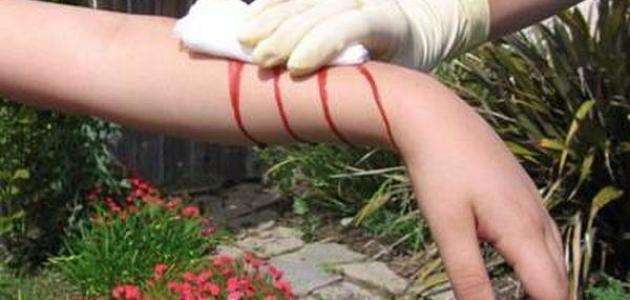Contents
- 1 Burns
- 2 degrees of burn
- 3 Calculate the area of burns
- 4 symptoms and signs of burns
- 5 treatment
- 6 types of treatment
- 6.1 In the case of minor burns without bubbles
- 6.2 In the case of minor burns associated with bubbles
- 6.3 In the case of burns, when they are deep and very large
- 6.4 In the case of electrical burns
- 6.5 Home treatment for small burns
- 6.6 In the case of burns that produce chemicals
- 6.7 In the case of solar burns
- 7 Important Notes You Should Know Before Any Burn Treatment
Burns
It is a defect that affects the human skin, and works to remove a layer of the skin for many different reasons, it is possible that the cause of the burning is the exposure of the body for very long hours to sunlight, electricity, hot liquids, or open flames, or hot objects such as iron, for example, or it occurs as a result. Exposure to a very cold effect, and most of the burns occur inside the home, and it is one of the leading causes of accidental death in childhood, and if the human body is exposed to burns and exceeds 90%, it must be treated in the hospital.
Degrees of burns
First degree burns
And they are minor burns, they do not affect the skin, which is not dangerous at all, but it causes mild pain and slight redness in the outer layer of the skin, and it comes in its system after sunburn or household burns such as the kitchen, for example.
Second degree burns
These burns are not dangerous despite the severity of the pain they cause to the injured, except in one case, which is if the burn is caused by a bacterial infection or infection, and it may cause bubbles on the skin.
Third degree burns
They are burns that destroy the inner and outer skin, and these burns are very serious and very deep, they reach the burning of hair, blood vessels, nerves, glands and fat, and sometimes they reach the bones and muscles and their color tends to be black, and this includes the two degrees (first and second), and sometimes it reaches the stage of killing .
Calculate the area of burns
- Sexual organ area 1%.
- The thighs with the back is 18%.
- Abdomen with chest 18%.
- Head and neck 9%.
- Each upper party is 9%.
- Each lower limb is 18%.
Symptoms and signs of a burn
- Redness and swelling of the skin.
- Formation of bubbles on the skin.
- The severe pain experienced by the injured.
- The feeling of the victim of nervous shock due to the large number of pain he suffers.
- He suffers a shock in his circulatory system, due to the loss of a large amount of fluid when bubbles are formed.
treatment
It is the attempt to control the disease as much as possible completely, or reduce the severity of this disease or get rid of it, which is the second stage after the stage of diagnosis of the disease.
Types of treatment
- Radiation Physical Therapy: This is where the patient is treated with radiation.
- Cognitive behavioral therapy: It is used to treat some mental illnesses, such as anxiety, depression, or irritable mood.
- Physiotherapy: through which services are provided to individuals to preserve the survival of their lives.
- Music therapy: A therapy based on interacting with music to achieve specific goals.
- Gene therapy: through which healthy genes are inserted into the cells of the patient's body.
- Camel urine therapy: Camels can be used to treat some diseases.
- Bioremediation: in which bacteria or fungi are used for treatment.
- Chemotherapy: treating an injured person with chemicals, or to kill cells or living microorganisms.
- Family therapy: It is used to treat mental illnesses such as depression and others.
For minor burns without bubbles
- The burn site should be washed with cold water, not too rush.
- Remove everything tight to the body before the body swells and swells, such as removing rings or the like.
- The burn area is covered with a soft cloth after we wet it with cold water and put it on the source of the burn for a period of time usually (fifteen minutes), so that the source of pain is gone.
- We wrap ice cubes with a cloth and place them over the pain area for a period of (fifteen minutes), then remove them and re-apply them every five minutes again, and it is preferable not to put ice directly on the skin so as not to cause the so-called (frostbite).
- It is preferable not to use home remedies.
- When the pain relief stage is reached, a cream or ointment suitable for the burn is applied to the burn, and it is preferable to use a cream (Dermazine).
In the case of minor burns associated with bubbles
- Wash the burn with cold water without touching the bubbles.
- If clothes get stuck in a fire, do not remove them.
- Don't try to cover the wound
- We must show these burns to a doctor immediately
In the case of burns, when they are deep and very large
- Quickly remove the victim from the source of the burn.
- We remove the clothes from the person's body immediately.
- Put a clean cloth on the burn area.
- Do not apply any kind of salves, household materials, or medicine to the burn.
- We call the ambulance and do what we can do with the injured person to treat him.
In the case of electrical burns
- First, we turn off the source of electricity.
- Do not touch the injured person with your hand immediately. Rather, he must be kept away by materials that are not affected by electricity, such as a piece of wood, for example, so that we are not affected by the injured with electricity and the fire transmits to our bodies.
- Cover the burn site with a clean, dry, sterile piece.
- In this case of burning, it is not permissible to use ice or water, as in the previous cases.
- We take the injured person to the doctor to see what needs to be done.
Home treatment for small burns
- Wash the burn well with an antiseptic solution.
- We bring a small, clean piece of cloth, put a little Brahm on it, then move it in a circular motion with the finger, and put it on the burn area, then put a piece of cotton and then wrap it; Because staying exposed exposes it to pollution.
- The patient is given an antibiotic.
- We give the victim water or juices, if available.
In the case of burns that produce chemicals
- Wash the affected area with clean water for at least 15 minutes.
- We completely remove the clothes contaminated with these materials from the person's body.
- If the mouth or throat is exposed to these substances, the patient should take small doses of cold water in the form of frequent periods, or feed him a little starch or tahini, if available.
- After that, we show the patient to the patient.
In the case of sunburn
* These burns are due to the body's exposure to the sun for very long hours, what is meant by (ultraviolet rays), as they cause redness, swelling and warmth of the skin, and sometimes these burns cause nausea for the injured person or cause him headache and pain.
- We try as much as possible to stay away from these rays that cause these burns, but when exposed to them we do the following:
- Keep the injured person out directly from the sun's rays.
- He takes a cold shower.
- The patient takes some analgesics to reduce pain or inflammation, which are specially designed to eliminate swelling in such burns.
- If we do all of the above with the affected person, but the pain remains the same, nausea and severe fatigue, or the burning is in a sensitive area of the body, then the doctor should be called immediately and presented to the injured person.
Important notes that you must know before undertaking any burn treatment
- There is what is said that upon exposure to any burn, (eggs, flower, toothpaste, and other things) must be applied, and this is very wrong, so it is not permissible to use such things, only use Vaseline if there is any and if there is no problem.
- It is absolutely not permissible to place anything on the burn if it is to be seen by the doctor.
- It is strictly forbidden to break the bubbles or even touch them or try to exfoliate the wounds.

